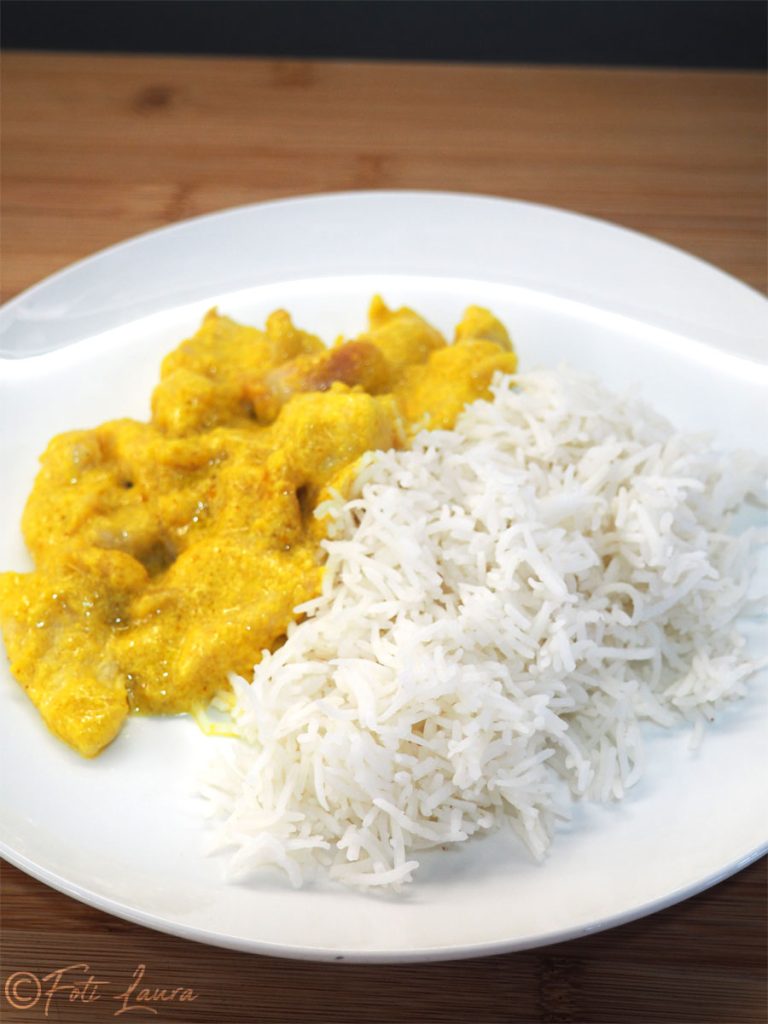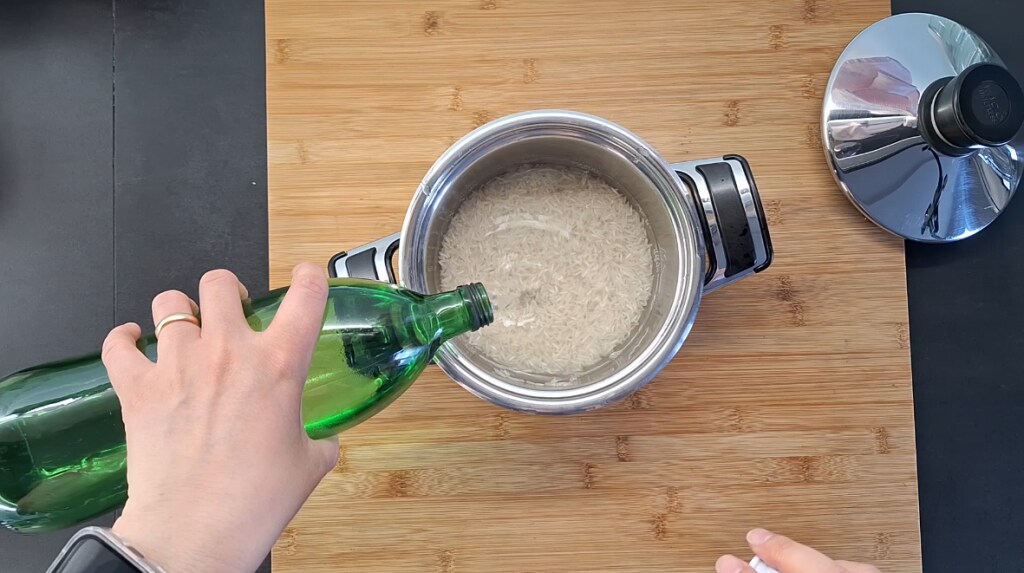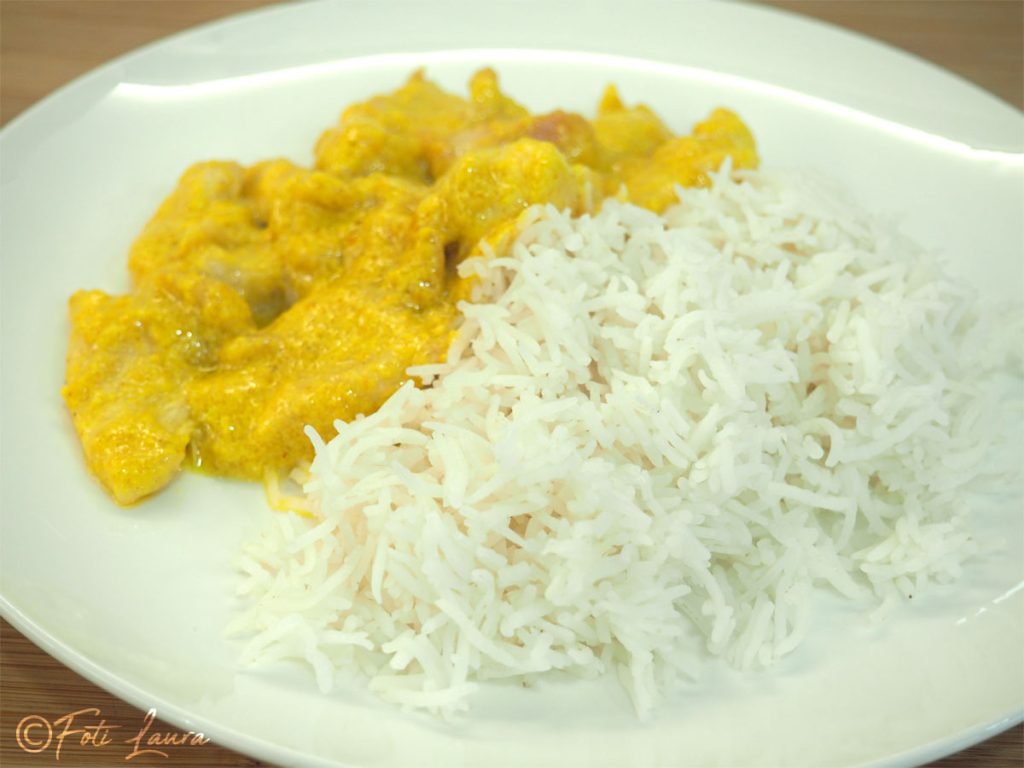Hello to all lovers of exotic cuisine and delicate flavors! How many times have you dreamed of preparing that Basmati rice that is light, fragrant, and perfectly fluffy, just like the one from your favorite ethnic restaurant? Perhaps you’ve ended up with a sticky mush, or overcooked and clumpy rice… a real nightmare!
Today, I’ll reveal my foolproof method to cook Basmati rice to perfection. No complicated tools or star chef techniques are needed, just a few small adjustments that will make all the difference.
Forget about overcooked and sticky rice: with my tips, you’ll achieve white, long, incredibly fragrant, and perfectly fluffy grains, ready to accompany every dish from exotic sauces to the most encompassing curries. Are you ready to become true rice masters? Let’s get started!

- Difficulty: Very Easy
- Cost: Very Cheap
- Rest time: 7 Minutes
- Preparation time: 5 Minutes
- Portions: 2
- Cooking methods: Stovetop
- Cuisine: Asian
- Seasonality: All Seasons
- Energy 112.00 (Kcal)
- Carbohydrates 20.00 (g) of which sugars 0.00 (g)
- Proteins 2.08 (g)
- Fat 1.25 (g) of which saturated 0.00 (g)of which unsaturated 0.00 (g)
- Fibers 0.40 (g)
- Sodium 50.00 (mg)
Indicative values for a portion of 200 g processed in an automated way starting from the nutritional information available on the CREA* and FoodData Central** databases. It is not food and / or nutritional advice.
* CREATES Food and Nutrition Research Center: https://www.crea.gov.it/alimenti-e-nutrizione https://www.alimentinutrizione.it ** U.S. Department of Agriculture, Agricultural Research Service. FoodData Central, 2019. https://fdc.nal.usda.gov
Ingredients
- 7 oz Basmati rice
- 1 1/4 cups water
Tools
- 1 Pot with a thick base
- 1 Strainer
- 1 Fork
- 1 Tea Towel clean, if the lid does not fit tightly on the pot
Step-by-Step Instructions
Rinse, rinse, rinse! Take the amount of Basmati rice you want (your two handfuls per person) and put it in a large bowl, in a pot, or directly in a strainer. Rinse it under cold running water for at least 4-5 times. Stir the rice with your hands while rinsing.
Why? This is the first and most important secret! Washing the rice removes excess starch, which makes it sticky. Continue rinsing until the water runs almost clear. This ensures you have light and perfectly fluffy grains.
Put the rice in a pot: Transfer the well-rinsed and drained rice into the pot with a thick base.
Measure the water ‘by finger’: Add cold water to the pot, covering the rice by about one finger (or about 0.8 inches).
Tip: This intuitive method is super effective for Basmati! It is based on the proportion between rice and water created based on the pot’s surface. If you prefer precision, the ratio is about 1 part rice to 1.5 parts water (e.g., 7 oz rice and 1 1/4 cups water), but the “by finger” method is almost magical!
Salt (if you want): If you like, you can add a pinch of salt at this stage.
Start without a lid: Turn the heat on medium flame. Leave the pot uncovered and wait for the first small bubbles to form on the water’s surface. You don’t need to bring it to a brisk boil immediately.
Why without a lid at first? This allows for gradual heating and helps cook the rice evenly before the steam phase.
Cover and increase the flame: As soon as you see the first bubbles, it’s a key moment! Cover the pot with a tightly fitting lid. If your lid isn’t perfect, use a clean tea towel between the pot’s edge and the lid, gathering it well around the knobs to prevent it from hanging and catching fire (you can use a kitchen elastic band to secure it).Boil: Slightly increase the flame for about 2-3 minutes, the time necessary for the rice to actively boil under the lid.
Minimum and no touching: As soon as you hear it boiling, reduce the flame to the bare minimum! It should be almost off. And here’s another secret: never lift the lid for the next 10 minutes. Why? The steam created inside is essential for cooking the rice evenly and perfectly. Every time you lift the lid, the steam escapes and compromises the cooking.
Cook for 10 minutes: Let the rice cook on the lowest flame with the lid tightly closed for exactly 10 minutes.Turn off and rest: After the 10 minutes, completely turn off the stove. But be careful: leave the rice to rest, still covered, for another 7 minutes.
Why? This resting phase is crucial! The internal steam continues to work, completing the cooking of the grains and making them soft, fluffy, and very fragrant. Don’t skip this step!Open and fluff: After the 7-minute rest, you can finally open the lid. You will see the grains swollen and seemingly compact. Take a fork and gently fluff the rice, moving the grains from bottom to top. You’ll be amazed at how easily they separate!
Serve immediately: Your Basmati rice is ready to be served! Pair it with your curry chicken or your favorite sauces, vegetables, or curries.
Advice and Notes
Pot with a thick base: It’s really an investment that pays off. It prevents the rice from sticking or burning at the bottom and distributes heat evenly.
If a little sticks: Don’t worry if a small portion sticks to the bottom! Once you’ve removed the rice, just let the pot soak with plain water for a few minutes, and everything will come off easily.
Storage: Cooked Basmati rice keeps in the refrigerator in an airtight container for 2-3 days. Keep in mind that it will tend to lose some of its fragrance and softness.
Pot with a thick base: It’s really an investment that pays off. It prevents the rice from sticking or burning at the bottom and distributes heat evenly.
If a little sticks: Don’t worry if a small portion sticks to the bottom! Once you’ve removed the rice, just let the pot soak with plain water for a few minutes, and everything will come off easily.
Storage: Cooked Basmati rice keeps in the refrigerator in an airtight container for 2-3 days. Keep in mind that it will tend to lose some of its fragrance and softness.
FAQ – Basmati Rice
Can I use another type of rice with this method?
This method is specific for Basmati rice, which is a long-grain aromatic rice that releases little starch. For other types of rice (e.g., Carnaroli for risottos, Arborio, or common rice), the cooking method changes.
Is it mandatory to wash the rice?
Yes, for Basmati it is highly recommended to wash it. It is the key step to obtaining fluffy and non-sticky grains by removing excess starch.
What happens if I lift the lid during cooking?
Basmati rice cooks primarily by steam. If you lift the lid, the steam escapes, the internal temperature drops sharply, and the cooking may not complete evenly, leaving the grains hard or altering the texture.
My rice stuck a lot to the bottom, why?
This could be due to too high a flame during the minimum cooking phase, or using a pot with a too-thin bottom. Make sure the flame is very low and that the pot’s base is thick.
And there you have it! With this guide, you are officially a master in preparing perfect Basmati rice. You’ve seen how, with a few little tricks and a bit of patience, you can achieve a flawless result every time!
This light and fragrant rice is a versatile side dish that pairs wonderfully with countless dishes, from the simplest to the most elaborate. Now all that’s left is to put yourself to the test and enjoy the exotic aroma that will invade your kitchen.
What’s your favorite pairing with Basmati rice? Let me know in the comments! And don’t forget to share this recipe with anyone dreaming of restaurant-quality Basmati!

